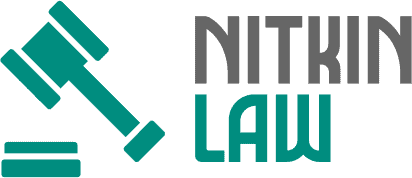Seatbelts are vital for protecting drivers and passengers, but in rare cases, they malfunction, leading to serious injuries or fatalities. In Sacramento, where traffic collisions are common, defective seatbelt claims require a thorough investigation to determine if the failure was due to a design flaw, manufacturing defect, or improper installation. Proving liability involves gathering expert testimony, accident reconstruction, and product analysis. Skilled attorneys are critical in holding manufacturers accountable and ensuring victims receive fair compensation. If you’ve been injured due to a defective seatbelt in California, it’s crucial to consult a seatbelt failure accident lawyer to understand your rights and pursue appropriate compensation.
What is a Seatbelt Defect?
A seatbelt can be defective in many ways, including poor design, a mistake in the manufacturing process, or a failure to warn of unreasonably dangerous situations. Defects may include improper latching, unplanned unbuckling, or ineffective restraint during an accident. The first step in establishing a case is determining what kind of defect has occurred.
Gathering Evidence
Evidence collection is key. Attorneys sift through all relevant information, including maintenance records, accident reports, and witness statements. Images from the location of the accident and any type of security video cameras can be crucial evidence.
Consulting Experts
Often, testimony from an expert fortifies the case. Engineers or safety experts may help explain how and why a seat belt did not work as it was supposed to. Their analyses clarify whether the defect was due to design or manufacturing flaws. Qualified specialists can also assess the overall safety condition of the car and its components.
Analyzing Accident Reports
Accident reports are essential documents. They often contain details about the collision, including speed, impact angle, and environmental conditions. Lawyers examine these reports to identify inconsistencies or details that support the claim of a seatbelt defect. This information can highlight discrepancies between expected and actual seatbelt performance.
Reviewing Vehicle History
A vehicle history check can show past safety recalls or similar complaints. Investigators are examining whether the automaker was aware of problems with the belt. A history of recalls or documented problems will help establish a pattern of negligence.
Evaluating Manufacturer Responsibility
It is the manufacturer’s responsibility to sell safe products to consumers. Lawyers will examine whether the manufacturer complied with the relevant industry standards and regulations. They examine the production processes and quality control measures. Failure to comply can suggest negligence, which can help support a liability case.
Comparative Analysis with Industry Standards
A comparison to industry standards can identify deviations from the norm that indicate a defect in the seatbelt. While the impact seatbelt did not perform to the reasonable safety expectations of the consumer, lawyers often cite regulations and industry standards to support their argument. It provides a straightforward method to assess the severity of the defect and the potential impact on numerous individuals or systems.
Showing Impact on Victims
Establishing liability also means showing the extent of the victim’s damages. Attorneys are explaining how the defect was a direct cause of injuries or made them much worse. A case is built through medical records, expert testimony, and personal accounts that show the connection between the defect and the harm done.
Legal Strategies in Court
Lawyers organize their discoveries and present them to a judge in a story that ties the evidence to the defendant’s liability. The method includes interrogating the witnesses, presenting expert analyses, and concluding from the data presented.
Negotiating Settlements
Some find their way into a courtroom, while others remain unseen by a judge. Attorneys will fight with manufacturers or insurance companies for appropriate compensation. They use the evidence they have collected to speak to the amount of damages they are requesting based on the impact on the victim and the financial impact on them.
Ensuring Future Safety
Although individual cases may seem insignificant, safety standards will improve when manufacturers know they could face prosecution for avoiding responsibility. If legal action is taken successfully, it may result in either recalls or changes within the industry, which will inevitably benefit future consumers. Lawyers work to use safer products and follow up with restrictions on products that harm children.
Holding Manufacturers Accountable for Defective Seatbelts
As you can see, proving fault in a defect case can be unique and needs considerable consideration. Lawyers weave together evidence, expert analysis, and legal knowledge into a compelling narrative. They help victims of such crimes by ensuring they are brought to justice and by creating a safer place for everyone.


